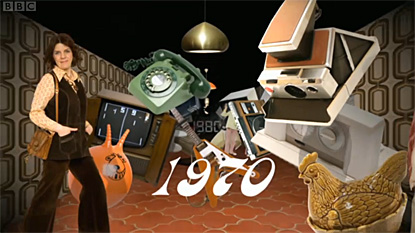It’s now a decade since I first cut my teeth doing VFX on music videos. Lots has changed, technology has marched on at a huge pace, and yet the fundamental way of approaching a shot is almost the same.
Simple solutions are often the most effective ones and in particular those you know and can trust. For me this has meant finding appropriate methods for a particular time & situation and sticking with them for similar projects in the future. Consequently alongside my extensive Softimage, Terragen and PFTrack experience, my VFX fingers have touched Adobe products, GIMP, Deep Exploration, SpeedTree, Global Mapper, Inkscape, Combustion, Nuke, Maya, Max, and Cinema 4D.
As a generalist with such a broad background skillset, I found myself recently in an unusual position; that of a 3D lead artist on a 60 episode long TV series. All in all I spent a year working alongside a team of staff from both the production and post production side of things. I was even on set for a stint, something I hadn’t done for many years. Rather irritatingly, the whole thing is under wraps so I can’t say a word about that directly until it’s broadcast.
In the past 10 years I’ve learnt more than I could possibly have imagined when I left college. Here’s a few things I’d like to pass on to those entering the brave new (actually quite old) world of VFX. They’re based on my experience, so might not match the opinion of others.
Firstly and most importantly, listen to those telling you not to be sedentary. Stand up often and walk around. Consider a standing desk. Exercise regularly. You need it. Yes you do. Fresh air too, and daylight. By daylight I mean directly from the Sun, not a simulation bulb. Plus if you work from home, which you may well do at some point, human contact is essential. You need those breaks from the screen to be a human being rather than a ‘zombie’ as I’ve heard execs refer to VFX guys as.
On a similar note, burning the candle at both ends does nobody any good. Try to avoid long hours, even if you are enjoying a project. Past a certain point in the day, I find the work I am doing is deteriorating in quality and my brain is no longer functioning at its best. On that note, drink plenty of water. Lots of offices are air-conditioned and will dry you out very fast. If you must work extra time, try to wangle a weekend, especially if you’re a freelancer. You’ll get paid an extra day and will have the benefit of further sleep. Some of my best work has been done on a Saturday.
Don’t be ashamed to take shortcuts or cheat. The whole of VFX is a cheat, a lie. It’s OK to use stock libraries for footage, elements, sound, textures and even models. Quality varies so do your research, but the time you could save will actually save money in the end too. For an HD project, consider rendering out elements at 720p, then upscaling in the comp. 720p has less than a million pixels in it. 1080p has over 2 million. Render times are much lower and many cannot tell the difference in image quality. There are rare exceptions to this, but I’ve even passed SD anamorphic widescreen renders of skies and the like to be composited before now and nobody’s noticed or cared. If it is matching something soft in the background footage or is out of focus anyway, it just doesn’t matter.
Keep curious. Ask questions of those around you, whether they’re older or younger, wiser or greener. Everybody knows something the person next to them doesn’t and in this profession, that’s especially true. Whether you are self-taught or degree educated, you cannot possibly know all there is to know about the huge amount of software and associated techniques. Remember what I wrote earlier about simple solutions? The more experienced near you will possibly know them, so just ask. Don’t waste four hours struggling to do something that could be done in one hour using a technique they know.
VFX isn’t all about big budget movies and long form TV shows. Consider using your skills elsewhere. There’s a huge amount of corporate and educational work out there. I did quite a long stint of work on illustrative animations for educational websites and kids TV. As another example, did you know there’s 3D warehouse simulation software, requiring many real-time 3D models? Now you do.
Finally, if you’re a freelancer, get used to this question: “So what are you working on at the moment?”
My answer is currently, “Nothing,” so feel free to get in touch!
If you have no money, don’t, but do read this: https://www.ajcgi.co.uk/blog/?p=855


